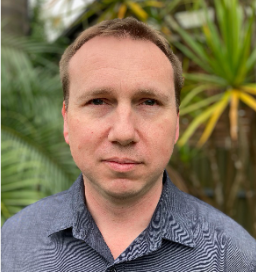Machine Learning Approaches to Maritime Detection
Detection in the maritime domain requires the radar return from targets to be distinguishable
from the background interference. These radars traditionally use non-coherent processing due
to the time-varying and range-varying nature of the Doppler spectra. However, as radar
platforms fly higher and look down at steeper angles, the sea clutter power will increase and
traditional methods will not be as effective. This talk covers several new approaches for
target detection in the maritime domain. These include the use of sparse signal separation
algorithms, including dictionary learning, two machine learning algorithms and the
application of the single snapshot coherent detector. Each of these techniques is demonstrated
using using either real or realistic simulated sea clutter and shows good potential when
compared to traditional processing methods.
Date and Time
Location
Hosts
Registration
-
 Add Event to Calendar
Add Event to Calendar
Loading virtual attendance info...
- Syracuse University
- 111 College Pl
- Syracuse, New York
- United States 13210
- Building: Center of Science & Technology
- Room Number: CST 4-201
- Click here for Map
- Contact Event Hosts
-
Contact Sam Stone
stone@ieee.org
Speakers
 Luke Rosenberg of Lockheed Martin
Luke Rosenberg of Lockheed Martin
Machine Learning Approaches to Maritime Detection
Detection in the maritime domain requires the radar return from targets to be distinguishable
from the background interference. These radars traditionally use non-coherent processing due
to the time-varying and range-varying nature of the Doppler spectra. However, as radar
platforms fly higher and look down at steeper angles, the sea clutter power will increase and
traditional methods will not be as effective. This talk covers several new approaches for
target detection in the maritime domain. These include the use of sparse signal separation
algorithms, including dictionary learning, two machine learning algorithms and the
application of the single snapshot coherent detector. Each of these techniques is demonstrated
using using either real or realistic simulated sea clutter and shows good potential when
compared to traditional processing methods.
Biography:
Luke Rosenberg (FIEEE) received the bachelor’s degree in electrical and electronic
engineering, the master’s degree in signal and information processing, and the Ph.D degree
from the University of Adelaide, Australia, in 1999, 2001, and 2007, respectively. In 2016, he
completed the Graduate Program in Scientific Leadership at the University of Melbourne,
Australia. He leads the Radar Sensing and Exploitation group at STELaRLab, Lockheed
Martin Australia and is an adjunct Associate Professor with the University of Adelaide. Prior
to this he was a Research Specialist at the Defence Science and Technology Group, Australia.
His work covers the areas of radar image formation, classification, adaptive filtering,
detection theory, and radar and clutter modelling. In 2014, he spent 12 months with the U.S.
Naval Research Laboratory (NRL) working on algorithms for focusing moving scatterers in
synthetic aperture radar imagery.
Dr. Rosenberg has received a number of best paper awards, the prestigious Defence Science
and Technology Achievement Award for Science and Engineering Excellence in 2016 and
the IEEE AESS Fred Nathanson award in 2018 for ‘Fundamental Experimental and
Theoretical Work in Characterizing Radar Sea Clutter’. In 2023, he became an IEEE Fellow
for contributions to maritime radar. He is an officer of the AESS board of governors, member
of the radar systems panel, a distinguished lecturer for the AESS, senior editor for the
Transactions of Aerospace and Electronic Systems and past chair of the IEEE South
Australian Section. He has over 170 publications including a book on Radar Sea Clutter:
Modelling and Detection.
Email:

